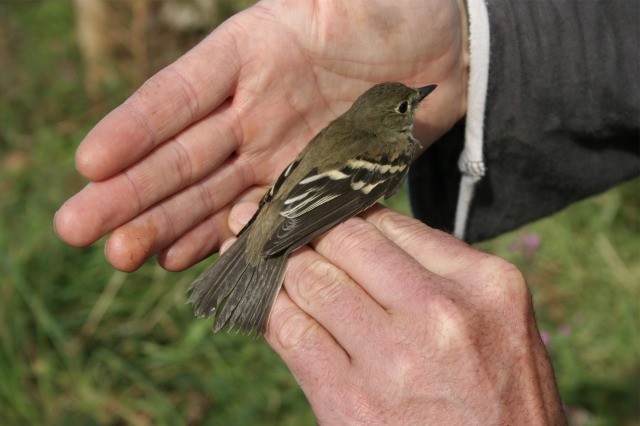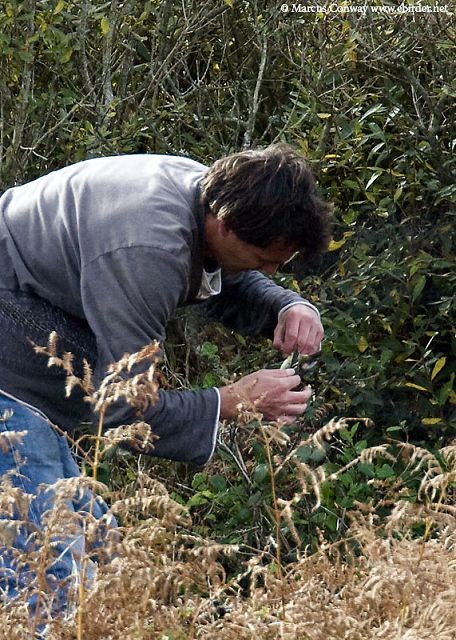Below is a copy of an article written last year (by myself and Kester Wilson, the ringer who caught the bird) outlining the identification of the Nanjizal Empidonax flycatcher. Although this bird was accepted by BBRC as an Alder Flycatcher, it has since been returned by BOURC for further investigation. Part of the problem may lie in the fact that the determination of sex by biometrics was at odds with the genetically proved sex using skin cells retrieved from a dropped feather. This further highlights the difficulty in identifying individuals of this group.
So although this article may not help the debate, it should be an illuminating read for all.

Alder Flycatcher, Nanjizal Valley, Cornwall (Photo: Kester Wilson)
Interestingly, this bird was in remarkably good condition, with a fat score of 4 (on a scale of 0 to 8) and a muscle score of 3 (on a scale of 0 to 3). For more details on these methods, see:
The tail length of this bird was at the top end for Alder Flycatcher, and, coupled with the fact that males tend to have more pointed wings (p10 = p6 on this bird), the bird was presumed to be a male.
Alder/Willow Flycatcher can be difficult to distinguish in the hand, and the key is a set of measurements which produce two discriminant formulae, as described in Pyle's Identification Guide to North American Birds Part I (1997). To a degree these formulae describe the overall shape of the wing, with Alder Flycatcher generally having a more pointed wing shape than Willow.
Formula I
(longest p – p6) – (p5 – p10)
On the Nanjizal bird, the difference between the longest primary and primary 6 (counting from the outside) was 6.3mm (this difference itself suggests Alder Flycatcher, as 95% of Willows have a maximum of 5.9mm). The measurement of p5 – p10 was ‑3.2mm (i.e. p10 was longer than p5, as could be seen in the field). Again, this difference suggests Alder Flycatcher, as 95% of Willows have a minimum value of ‑3.1mm.
So the result for Formula I is 9.5mm. This can then be graphed against the bill length (measured to the nares), putting this bird outside the range for Willow Flycatcher.

Reproduced with permission from Pyle (1997)
Formula R
[(longest p – p6) + (p9 – p5) + (wing – tail)]/[(p6 – p10) + bill]
In the Nanjizal bird, this came out as:
[6.3 + 8.8 (70 – 59)]/[0 + 8.5] = 3.07
This value falls outside of the range of 95% of Willow Flycatchers (values of 0.98 to 2.91) but well within the range for Alder Flycatcher (2.41 to 4.68).

Alder Flycatcher, Nanjizal Valley, Cornwall (Photo: Marcus Conway)


